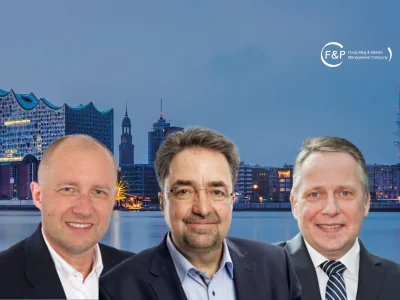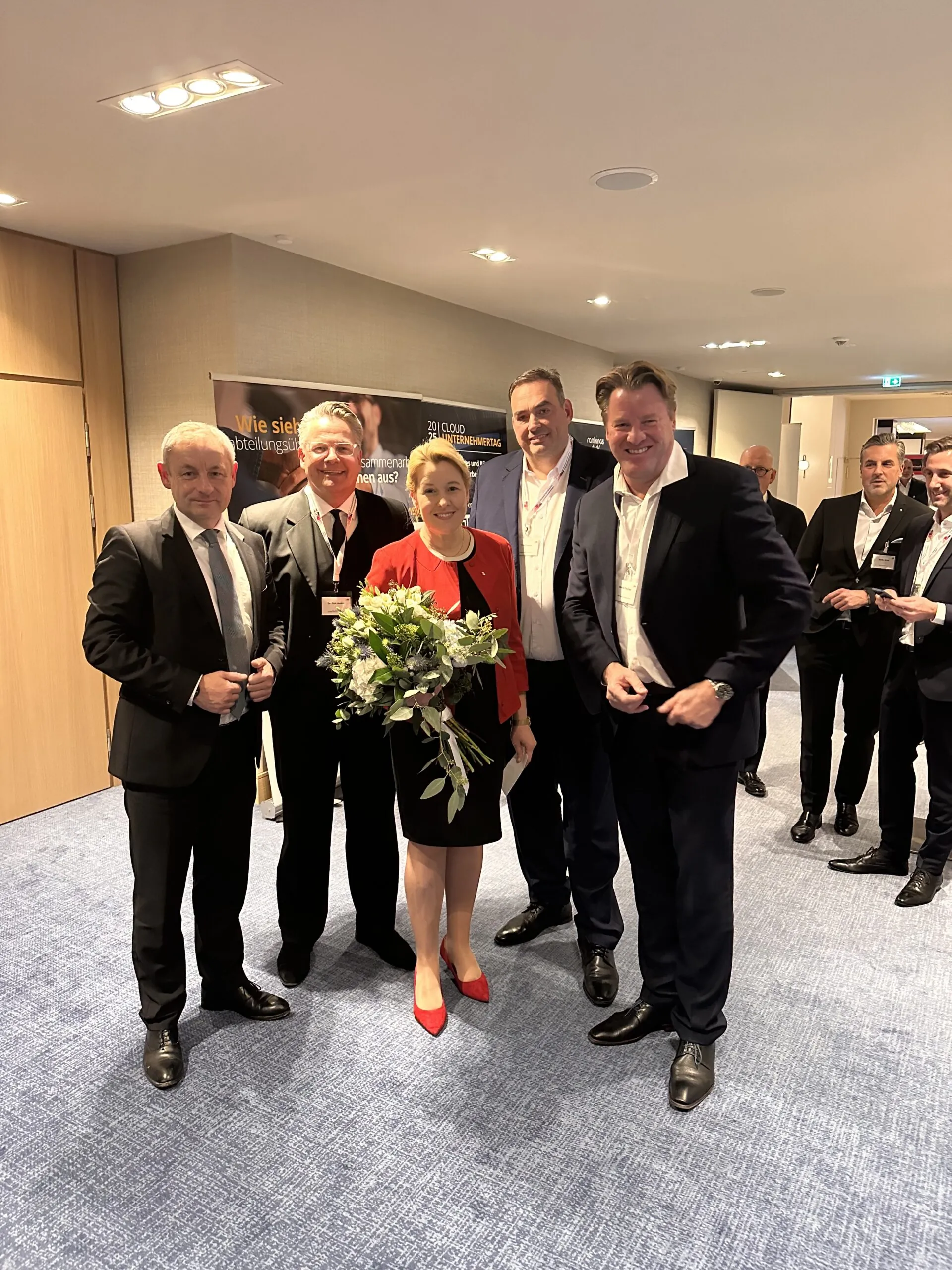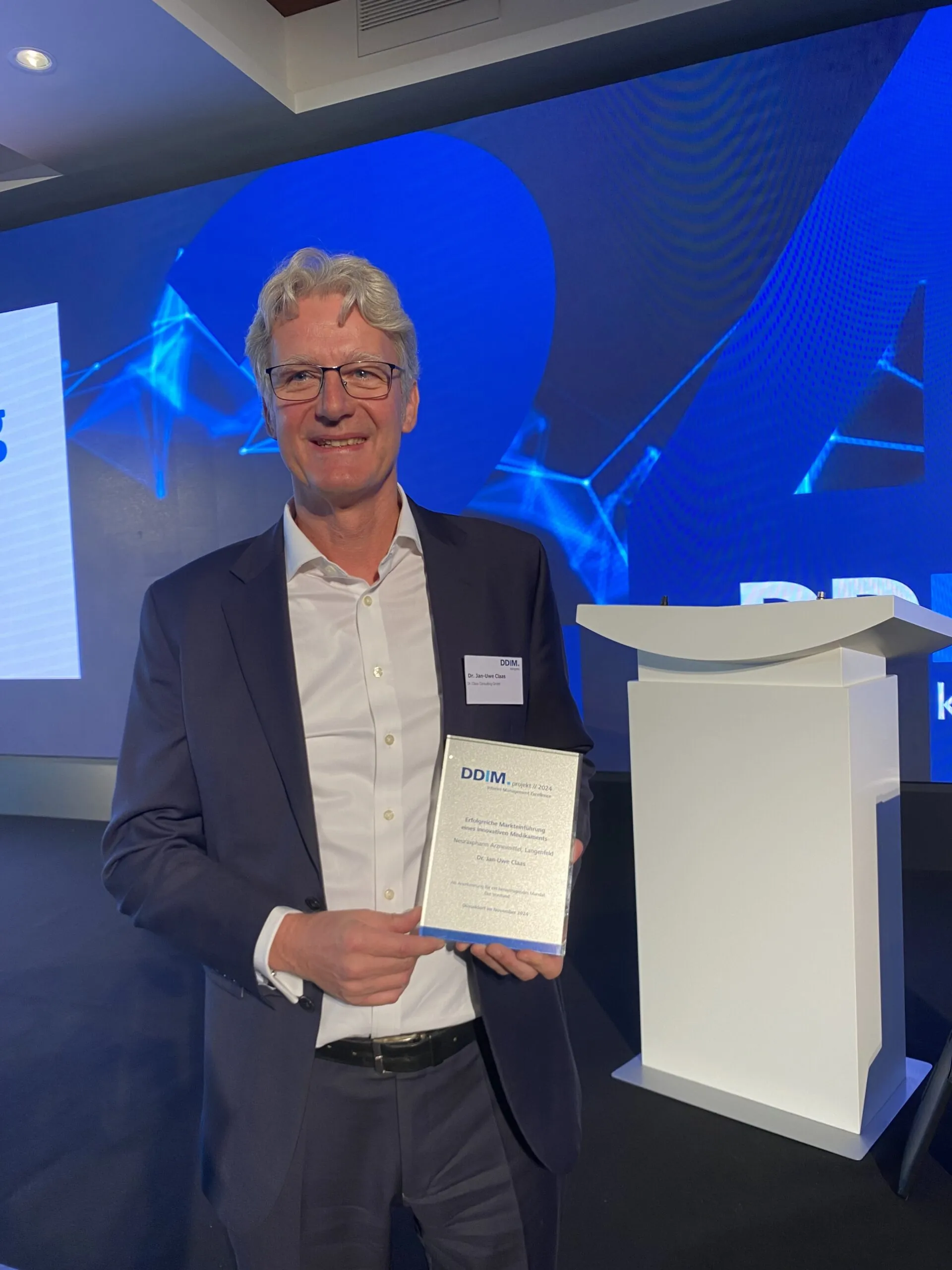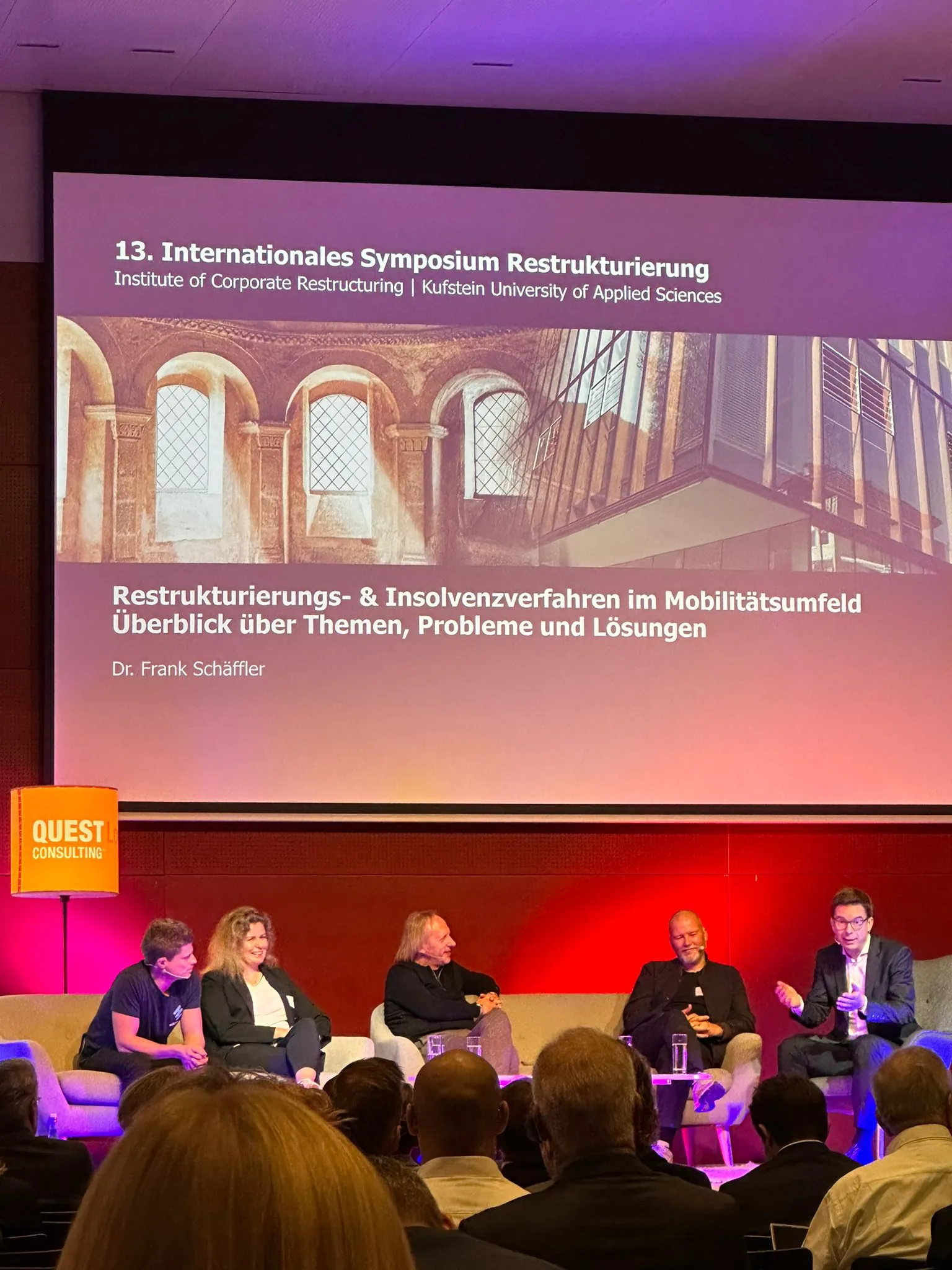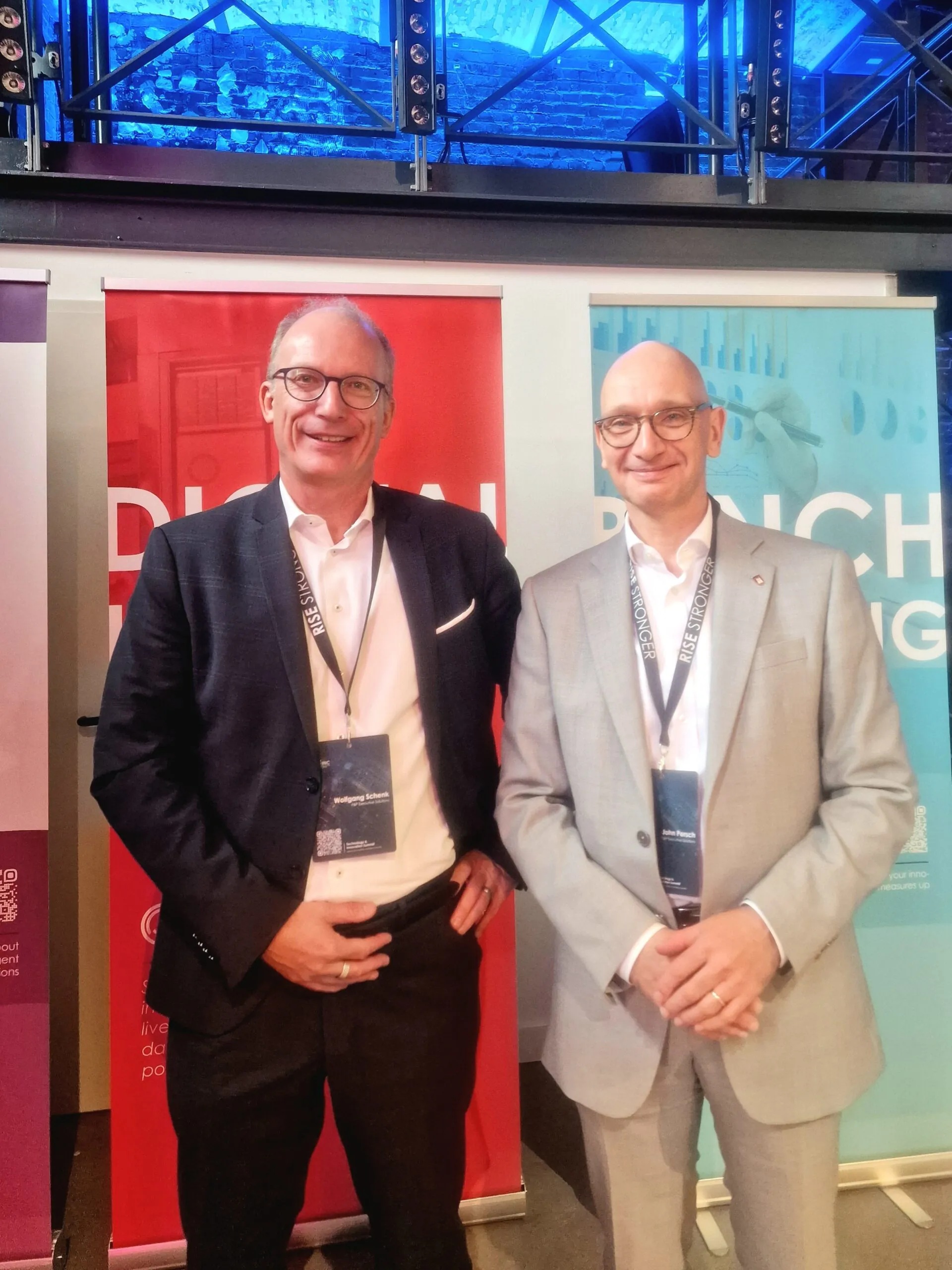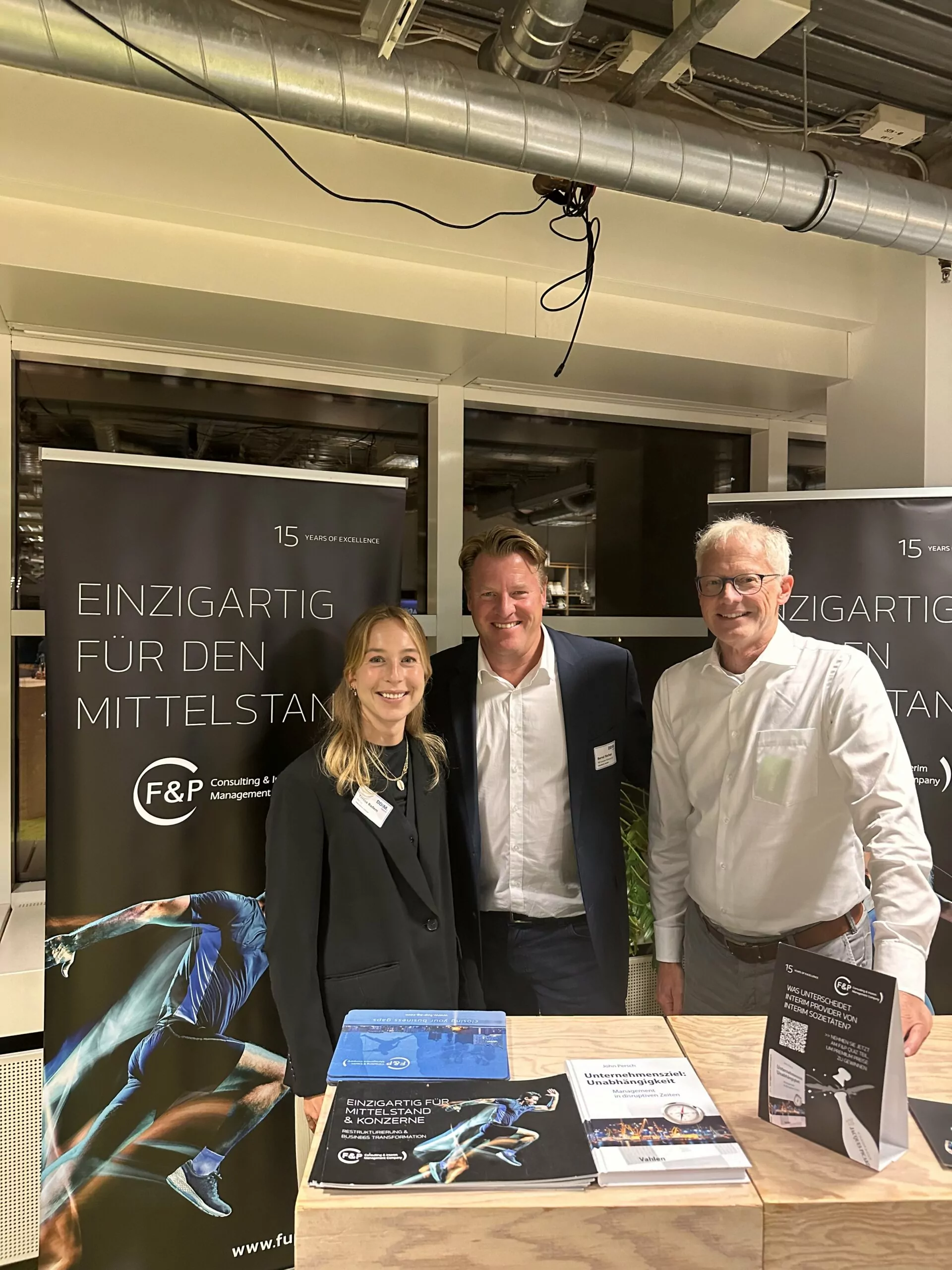F&PNews
New chapter: Teresa starts as an F&P expert
After many successful years in online marketing, Teresa Badem is taking the next step – in addition to her permanent position with us, she …
New direction at F&P: Three partners take on shareholder roles
Q1/2025 starts with great news for us: three partners are taking on new shareholder roles and responsibility as Senior Partners! Jan Brandt – will …
70 years of the BDU – Insights and impressions from the German Consultants’ Day in Berlin
As in previous years, our CEO Bernd Fischer was on site at the German Consultants’ Day 2024. The gala dinner the evening before in …
70 years of the BDU – Insights and impressions from the German Consultants’ Day in Berlin with a journey through time from 1954 to 2024
Wie bereits in den Vorjahren war unser CEO Bernd Fischer vor Ort auf dem Deutschen Beratertag 2024. Das Galadinner am Vorabend im wunderschönen Kongresshotel …
70 years of the BDU – Insights and impressions from the German Consultants’ Day in Berlin with a journey through time from 1954 to 2024
Wie bereits in den Vorjahren war unser CEO Bernd Fischer vor Ort auf dem Deutschen Beratertag 2024. Das Galadinner am Vorabend im wunderschönen Kongresshotel …
70 years of the BDU – Insights and impressions from the German Consultants’ Day in Berlin with a journey through time from 1954 to 2024
Wow – was für ein Event! Die 20. Jubiläumsausgabe der Structured FINANCE war ein voller Erfolg und hat einmal mehr gezeigt, warum sie DIE …
70 years of the BDU – Insights and impressions from the German Consultants’ Day in Berlin with a journey through time from 1954 to 2024
Wie bereits in den Vorjahren war unser CEO Bernd Fischer vor Ort auf dem Deutschen Beratertag 2024. Das Galadinner am Vorabend im wunderschönen Kongresshotel …
70 years of the BDU – Insights and impressions from the German Consultants’ Day in Berlin with a journey through time from 1954 to 2024
Wie bereits in den Vorjahren war unser CEO Bernd Fischer vor Ort auf dem Deutschen Beratertag 2024. Das Galadinner am Vorabend im wunderschönen Kongresshotel …
70 years of the BDU – Insights and impressions from the German Consultants’ Day in Berlin with a journey through time from 1954 to 2024
Wow – was für ein Event! Die 20. Jubiläumsausgabe der Structured FINANCE war ein voller Erfolg und hat einmal mehr gezeigt, warum sie DIE …
70 years of the BDU – Insights and impressions from the German Consultants’ Day in Berlin with a journey through time from 1954 to 2024
Das Flaggschiff der deutschen Industrie, die Automobil- und Zulieferindustrie war über viele Jahre nicht nur größter Auftraggeber der Interim Management Branche, sondern auch größter …

